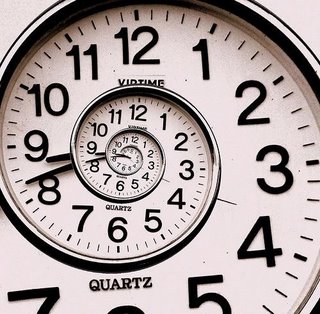
Well, well, well… no comment is even needed for this gem.
For decades, conventional wisdom has held that daylight-saving time, which begins March 9, reduces energy use. But a unique situation in Indiana provides evidence challenging that view: Springing forward may actually waste energy.
Up until two years ago, only 15 of Indiana's 92 counties set their clocks an hour ahead in the spring and an hour back in the fall. The rest stayed on standard time all year, in part because farmers resisted the prospect of having to work an extra hour in the morning dark. But many residents came to hate falling in and out of sync with businesses and residents in neighboring states and prevailed upon the Indiana Legislature to put the entire state on daylight-saving time beginning in the spring of 2006.
Indiana's change of heart gave University of California-Santa Barbara economics professor Matthew Kotchen and Ph.D. student Laura Grant a unique way to see how the time shift affects energy use. Using more than seven million monthly meter readings from Duke Energy Corp., covering nearly all the households in southern Indiana for three years, they were able to compare energy consumption before and after counties began observing daylight-saving time. Readings from counties that had already adopted daylight-saving time provided a control group that helped them to adjust for changes in weather from one year to the next.
Their finding: Having the entire state switch to daylight-saving time each year, rather than stay on standard time, costs Indiana households an additional $8.6 million in electricity bills. They conclude that the reduced cost of lighting in afternoons during daylight-saving time is more than offset by the higher air-conditioning costs on hot afternoons and increased heating costs on cool mornings.
"I've never had a paper with such a clear and unambiguous finding as this," says Mr. Kotchen, who presented the paper at a National Bureau of Economic Research conference this month.
Link for the rest.

2 comments:
The morning daylight arrived one hour later Sunday morning, just as we all expected with the first day of DST.
However, if it feels like you're losing about two hours of morning daylight this time of year, there's a good reason.
According to the US Naval Observatory, the sun passed overhead in Indianapolis on Saturday, March 8 at 12:55 pm (http://tinyurl.com/2setkh). So we already had 55 minutes of daylight shifted from morning to evening the day before starting DST, just from being on eastern time rather than central.
On Sunday, the solar transit was 1:55 pm, so we had almost two full hours of daylight shifted from morning to evening with DST on March 9.
When a public referendum was held in 1956 asking Hoosier voters their preference on Eastern versus Central time and whether to use daylight-saving time in the summer months, the only clear consensus that emerged was that most opposed the "double-fast time" that would result from being on Eastern Standard Time and switching to Eastern Daylight Time in the summer (http://tinyurl.com/296mt9).
Shifting two hours of daylight from morning to evening in March would be more tolerable if it were saving us energy, per the conventional wisdom. That was the supposed justification for Congress's extending DST from 7 to 8 months starting in 2007.
However, as you point out, a recent study of Hoosier energy usage by University of California-Santa Barbara researchers indicates that DST actually increases energy usage by 1 to 4 percent, and therefore costs us money. The study does not indicate whether the artificial "DST" effect of being in the geographically incorrect time zone might be adding even more cost.
The original paper dated 5 Feb 2008 can be found at "http://tinyurl.com/366x8x". A Wall Street Journal summary by Justin Lahart on 27 Feb 2008 communicated the findings to a broader audience (http://tinyurl.com/35oz8d).
Mr. Lahart wrote, "Having the entire state switch to daylight-saving time each year, rather than stay on standard time, costs Indiana households an additional $8.6 million [per year] in electricity bills. They conclude that the reduced cost of lighting in afternoons during daylight-saving time is more than offset by the higher air-conditioning costs on hot afternoons and increased heating costs on cool mornings... The energy-savings numbers often cited by lawmakers and others come from research conducted in the 1970s. Yet a key difference between now and the '70s... is the prevalence of air conditioning."
If you'd like to see a more equitable share of morning daylight, and potentially cut your utility bills as well, here are two actions to consider.
1) Encourage your two state legislators to sponsor and support legislation like this session's Senate Bill 34 (http://tinyurl.com/2x5wgm), which would request the DOT to move Indiana back to the central time zone.
Even if the 5 counties by Louisville and Cincinnati stayed on eastern, we'd still increase the number of Hoosiers in a single time zone from 81.6 to 95.7 percent.
2) Encourage your three U.S. Congressmen to sponsor and support legislation to cut the DST period back to 7 or 6 months, or even eliminate DST altogether.
Besides cutting energy use and costs, who knows how many person-hours the country could put to better use than changing clocks twice per year.
Regards, Bill Starr
Columbus, Indiana
Tue, 11 Mar 2008, 8:09 am EDT
Wonderful! Let's hope this gets traction -- in Indiana and elsewhere!
Post a Comment